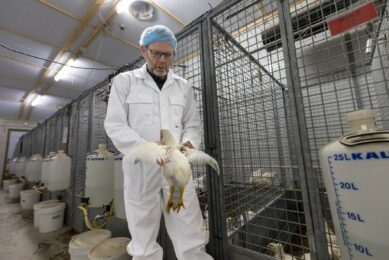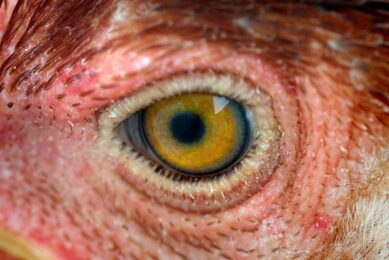DNA insights help poultry producers in developing countries

New findings about viral regions in the DNA of chickens could aid productivity for smallholder farms in developing nations. The international study, led by scientists from the UK-based Roslin Institute, have made some key discoveries about parts of the genetic code of chicken derived from viruses.
The findings aid understanding of these elements of the genome, which are remnants of historical Avian Leukosis Virus subgroup E (ALVE) infections. These viral sections of the genome can give rise to harmful molecules, which hamper birds’ growth and productivity. But their presence can also prevent related viruses from causing infection.
The scientists searched for and analysed ALVEs in the genetic code of more than 400 chickens from villages in Ethiopia, Nigeria and Iraq, finding a diverse mix of ALVE types across a range of birds, including 850 previously unseen types. This trebled the number of documented ALVE types and was the first study to focus on non-commercial chickens.
Understanding the role of each Avian Leukosis Virus subgroup E
The study could pave the way for further research to understand the role of each ALVE in immunity against external viruses, which could help manage breeding and improve the health of flocks in low and middle income countries.
Better understanding of the negative or positive effects of these endogenous viruses may enable improved production of meat or eggs in small-scale farms…” – Dr Jacqueline Smith
Commenting on the research, Dr Jacqueline Smith, of the Roslin Institute and Centre for Tropical Livestock Genetics and Health, said: “Better understanding of the negative or positive effects of these endogenous viruses may enable improved production of meat or eggs in small-scale farms, such as those of low and middle-income countries.” The research was published in Genetics Selection Evolution and was funded by the Centre for Tropical Livestock Genetics and Health through a BBSRC Impact Accelerator Award.
![]() Poultry Health Tool
Poultry Health Tool
With the latest insights on the 40+ most common poultry diseases.
Genetic diversity
In a separate but related study, researchers described the 2 ALVEs found in the standard reference genome for chickens – a dataset used by scientists for research. The ALVEs in the reference genome, taken from one undomesticated ancestor to modern chickens, do not reflect the diverse mix of ALVEs in the DNA of chickens today, researchers found. For example, one of the ALVEs in the reference dataset has not been seen in any other chicken. The reference sequence remains vital for the research community, but scientists say its comparison to the genomes of modern and pre-domesticated chickens should be considered when undertaking research.
Dr Andrew Mason, formerly of the Roslin Institute and now at the University of York, said: “In commercial poultry operations, viral segments of the genome can raise the risk of poor health to chickens, but they could provide a benefit in small flocks, where their ability to prevent other viruses could be highly beneficial.” The study, published in the journal Poultry Science, included support from commercial partner Hy-Line International from Iowa, United States.
Join 31,000+ subscribers
Subscribe to our newsletter to stay updated about all the need-to-know content in the poultry sector, three times a week. Beheer
Beheer








 WP Admin
WP Admin  Bewerk bericht
Bewerk bericht